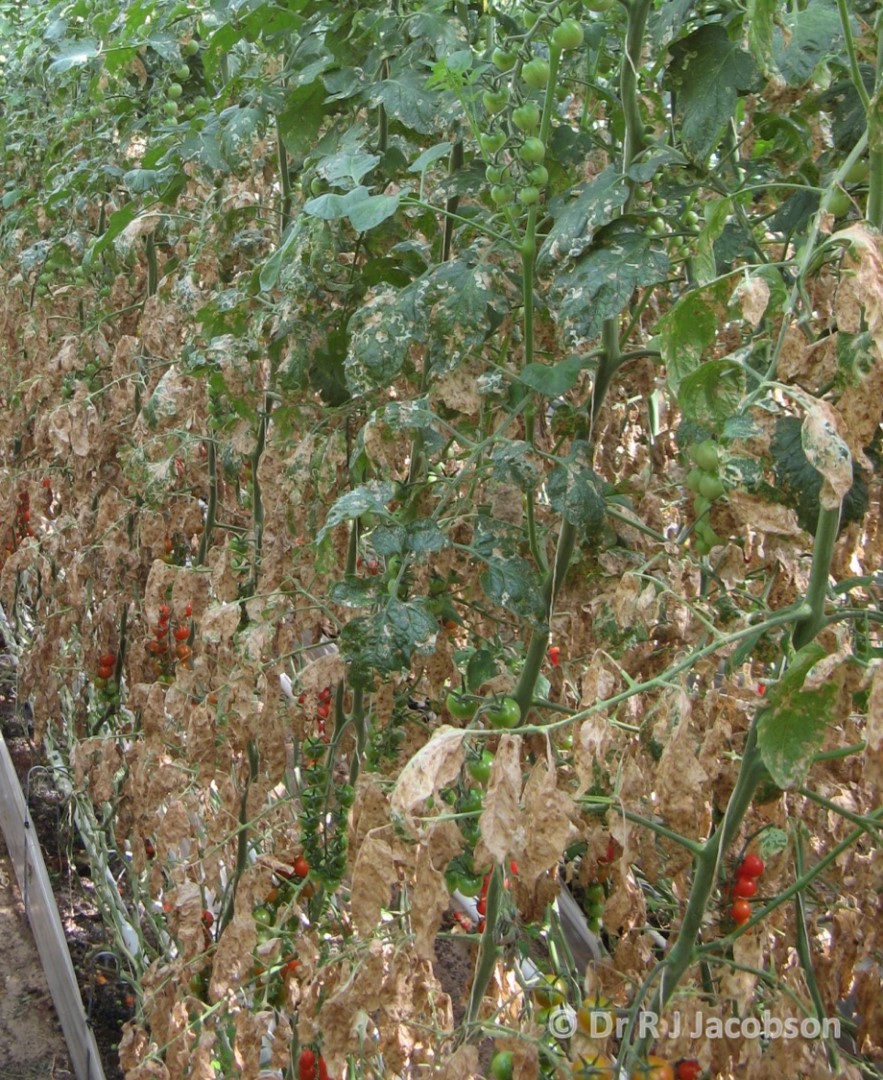Please click here to access the main AHDB website and other sectors.
- Home
- Knowledge library
- Biology and control of Tuta absoluta in tomato
Biology and control of Tuta absoluta in tomato
These pages provide background to the devastating leaf, fruit and stem mining pest, Tuta absoluta. This includes information about its biology, behaviour, crop damage and insecticide resistance, as well as details of an integrated pest management (IPM) strategy, which was developed specifically for this pest in UK tomato crops.
Establishment of Tuta absoluta in the UK
Tuta absoluta is a native of South America and was first recorded in Europe in Spanish tomato crops in 2006. It rapidly spread across Europe into the Middle East and North Africa.
It was first intercepted in the UK on Spanish imports in March 2009 and was classified as a notifiable (quarantine) pest by the Plant Health and Seeds Inspectorate (PHSI). There soon followed an outbreak in a commercial tomato crop where it caused extensive damage.
The pest became established at several more sites and, by 2012, there were 41 confirmed outbreaks. By 2014, the pest had become so well established in the UK that PHSI changed its status to non-notifiable and ceased routine inspections of imports and crops.
Tuta absoluta biology and behaviour
Tuta absoluta’s life cycle and behaviour are ideally suited to UK tomato crops where conditions are close to optimum for their development and population growth. They can survive as pupae between growing seasons in unheated glasshouses and transfer between production sites on plants, equipment and produce.
Read about Tuta absoluta’s biology and behaviour
Tomato crop damage caused by Tuta absoluta
The larvae of Tuta absoluta mine in the leaves, stems and fruit of tomato plants, causing devastating damage.
Learn more about the damage symptoms and the potential financial impact
Monitoring populations in tomato crops
It is essential that growers have accurate, topical monitoring information upon which to base decisions throughout the growing season. This can be gained by a combination of trap and plant inspections.
Read more about monitoring Tuta absoluta populations
IPM strategy
When Tuta absoluta first arrived in the UK in 2009, there were no effective control measures approved for use by our tomato growers. Within just four years, AHDB-funded projects led by the Tomato Growers’ Association (TGA) had introduced a new IPM-compatible control strategy.
An IPM strategy for Tuta absoluta in conventional season crops
Control measures used within the IPM strategy for Tuta absoluta
Insecticide resistance
The importance of varying the chemistry used for treatments against any pest species must not be underestimated because continuous selection pressure from one chemical group can lead to resistance. Tuta absoluta seems to have an extraordinary ability to develop systems that break down certain types of chemicals.
Learn more about insecticide resistance in Tuta absoluta populations
Useful links
Read our encyclopaedia of pests and natural enemies
Find more news and information on integrated pest management via our IPM hub
Author
The content on this page was authored for AHDB by Dr Rob Jacobson (Rob Jacobson Consultancy Ltd).
Acknowledgements
AHDB is grateful to all the TGA members who contributed to the trials that developed the current IPM strategies. Particular thanks to Peter Bell, Richard Bezemer, Colin Bridges, Roly Holt, Paul Howlett, Brian Moralee and Phil Morley, as well as our overseas colleagues at Horticilha, Portugal.
Tuta – whole crop damage

Image © Rob Jacobson Consultancy Ltd.
Topics:
Sectors:
Tags:

